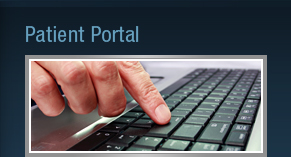Conditions Treated
Varicose and Spider Veins
 Varicose and Spider VeinsVeins are the vessels that return blood from the body back to the heart. They have one-way valves that keep blood flowing in one direction. If these valves stop functioning properly, blood can "drop down" under gravity, pool in the veins below, causing them to stretch and weaken the vein's wall and valves. When these swollen "ropy" veins are seen through the skin, they are called varicose veins. Patients experience pain or irritation in the varicose veins. The legs may also become swollen, achy and tired or develop cramps and sores. These conditions often coexist and are caused by venous insufficiency.
Varicose and Spider VeinsVeins are the vessels that return blood from the body back to the heart. They have one-way valves that keep blood flowing in one direction. If these valves stop functioning properly, blood can "drop down" under gravity, pool in the veins below, causing them to stretch and weaken the vein's wall and valves. When these swollen "ropy" veins are seen through the skin, they are called varicose veins. Patients experience pain or irritation in the varicose veins. The legs may also become swollen, achy and tired or develop cramps and sores. These conditions often coexist and are caused by venous insufficiency.
Spider veins are thin visible bluish or red lines that spread like a web very close to the surface of the skin. They are commonly seen on the face and legs. They are not usually harmful but they can burn, ache or may bleed.
» Contact Dr. Nishanian’s Orange County offices for Expert treatment of your Varicose and Spider Veins.
Deep Vein Thrombosis (DVT) and Thrombophlebitis Deep Vein Thrombosis (DVT)
Deep Vein Thrombosis (DVT) and ThrombophlebitisDeep vein thrombosis (DVT signifies blood clots that form in the veins that run deep between the muscles of the extremities. They develop as a result of "thick blood" conditions, surgery, trauma or prolonged limb immobilization such as being in a cast or during air and car travel. The condition carries a risk for Pulmonary Embolism (clots detaching and traveling to the lungs, sometimes resulting in death). Post-thrombotic syndrome occurs frequently after DVT, with long term sequelae of swollen, painful and discolored legs, varicose veins and open wounds (ulceration). These conditions are preventable with proper treatment.
Thrombophebitis is a painful inflammation of the superficial leg veins due to clotting conditions or varicose veins.
Both conditions are sometimes hereditary and require life-long observation and treatment. The treatments involve the use of blood thinners to treat and prevent clots, graduated compression stockings, and clot removal treatments for selected patients.
» Contact Dr. Nishanian who is a Vascular Specialist in Orange County, for treatment of your Deep Vein Thrombosis and Thrombophlebitis.
back to top
Venous Insufficiency and Venous Ulcers
Venous insufficiency is a result of failed vein valves that causes blood to flow backward through the leg veins and to build up in the leg. Other causes include chronic vein narrowing or blockages, such as those from unresolved blood clots or May-Thurner syndrome (narrowing of the large veins in the pelvis).
The symptoms include swollen achy and tired legs, discolored skin, and leg muscle cramping. Untreated venous insufficiency can cause poorly healing wounds (venous ulcers) or may increase your risk of blood clots.
» Contact Dr. Nishanian’s Orange County offices in Irvine, and Mission Viejo for treatment of your Venous Insufficiency and Venous Ulcers.
Venous Surgery and Interventions
Most Vascular specialists initial treatment for most venous conditions is graduated compression stockings. They are also used as a preventative measure. Patients who are not effectively treated by compression require surgery or endovenous intervention. Dr. Nishanian is a Vascular Specialist and treats this and all Vein issues daily.
Some surgical treatments for varicose vein conditions consist of vein ligation and stripping or minimally invasive microphlebectomy operations. Dr. Nishanian a Vein specialist performs minimally invasive surgery or interventions that include sclerotherapy and endovenous (radiofrequency or laser) ablation to treat varicose vein conditions on a regular basis.
Dr. Nishanian reports the treatments for blood clots (DVT) and venous occlusions have recently become significantly more effective and less invasive. These include removal of existing blood clots by thrombectomy and thrombolysis, venous angioplasty and stenting for selected vein occlusion conditions, and placement of Vena Cava filter devices to prevent pulmonary embolism (venous blood clots traveling to the lungs) in selected patients who are at risk. Dr. Nishanian treats the above conditions by endovenous minimally invasive methods.
» Contact Dr. Nishanian’s North Orange County & South Orange County offices for Venous Surgery and Interventions treatment.
« Previous Next »

back to top













 Varicose and Spider VeinsVeins are the vessels that return blood from the body back to the heart. They have one-way valves that keep blood flowing in one direction. If these valves stop functioning properly, blood can "drop down" under gravity, pool in the veins below, causing them to stretch and weaken the vein's wall and valves. When these swollen "ropy" veins are seen through the skin, they are called varicose veins. Patients experience pain or irritation in the varicose veins. The legs may also become swollen, achy and tired or develop cramps and sores. These conditions often coexist and are caused by venous insufficiency.
Varicose and Spider VeinsVeins are the vessels that return blood from the body back to the heart. They have one-way valves that keep blood flowing in one direction. If these valves stop functioning properly, blood can "drop down" under gravity, pool in the veins below, causing them to stretch and weaken the vein's wall and valves. When these swollen "ropy" veins are seen through the skin, they are called varicose veins. Patients experience pain or irritation in the varicose veins. The legs may also become swollen, achy and tired or develop cramps and sores. These conditions often coexist and are caused by venous insufficiency.

